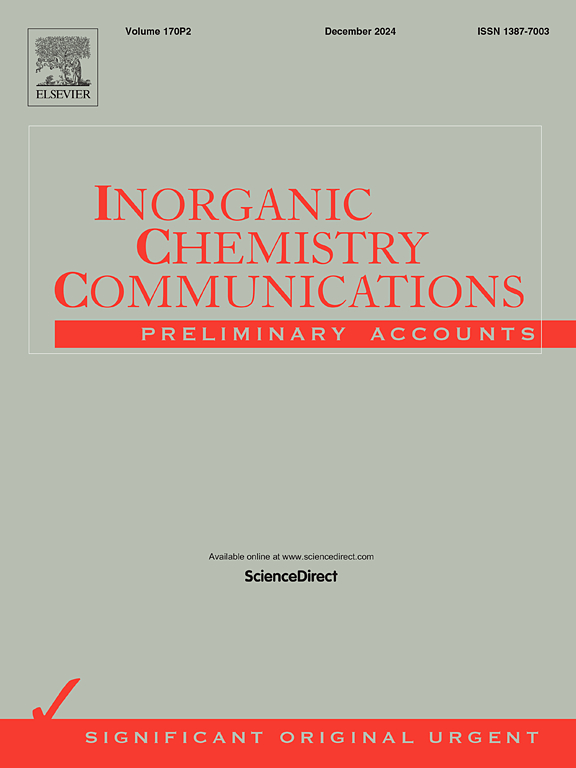Impact of calcination temperature on the structural, surface area, and magnetic properties of NiFe2O4/MnFe2O4/CeO2 ternary nanocomposites
IF 4.4
3区 化学
Q1 CHEMISTRY, INORGANIC & NUCLEAR
引用次数: 0
Abstract
This study focuses on the synthesis and comprehensive characterization of ternary NiFe2O4/MnFe2O4/CeO2 nanocomposites. A suite of analytical techniques, including X-ray diffraction (XRD), field-emission scanning electron microscopy (FE-SEM), Fourier-transform infrared spectroscopy (FTIR), X-ray photoelectron spectroscopy (XPS), Brunauer-Emmett-Teller (BET) surface area analysis, and magnetic property measurements, were employed to investigate the structural, morphological, compositional, surface, and magnetic properties of these materials. A systematic approach was implemented for the synthesis of the nanocomposites. FE-SEM analysis revealed the morphology and size distribution of the nanoparticles, while XRD confirmed the formation of the cubic phase within the nanocomposites. An increase in calcination temperature (from 600 to 800 °C) resulted in an increase in average particle size (11, 12 and 22 nm). FTIR and XPS techniques were utilized to study the chemical bonding and surface composition, respectively. BET analysis demonstrated a substantial surface area, however, the surface area decreased with increasing calcination temperature (37.17, 13.7, and 4.16 m2/g). Magnetic property measurements revealed an enhancement in magnetic behavior (2.88, 6.65, and 10. 54 emu/g) with increasing calcination temperature, indicating potential applications in biomedical and magnetic storage fields. All in all, this work highlights the potential of NiFe2O4/MnFe2O4/CeO2 ternary nanocomposites for a variety of technological applications by illuminating their complex characterization.

求助全文
约1分钟内获得全文
求助全文
来源期刊

Inorganic Chemistry Communications
化学-无机化学与核化学
CiteScore
5.50
自引率
7.90%
发文量
1013
审稿时长
53 days
期刊介绍:
Launched in January 1998, Inorganic Chemistry Communications is an international journal dedicated to the rapid publication of short communications in the major areas of inorganic, organometallic and supramolecular chemistry. Topics include synthetic and reaction chemistry, kinetics and mechanisms of reactions, bioinorganic chemistry, photochemistry and the use of metal and organometallic compounds in stoichiometric and catalytic synthesis or organic compounds.
 求助内容:
求助内容: 应助结果提醒方式:
应助结果提醒方式:


